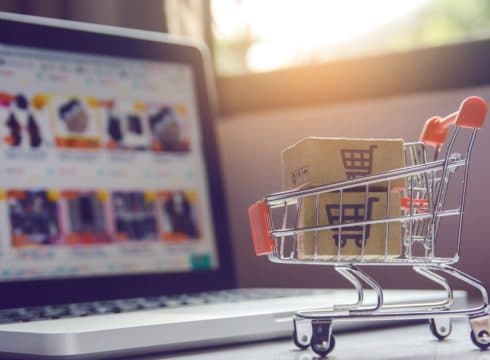Over the past year, there has been a 65% increase in brands developing their own website in India, which led to an increase in self-shipped orders
The growing popularity of the direct to consumer model is because it is a win-win for both the customers as well as retailers
Direct to consumer selling is a new, steadily growing niche that will be the next big thing in the market
Inc42 Daily Brief
Stay Ahead With Daily News & Analysis on India’s Tech & Startup Economy
The Indian retail landscape has changed dramatically over the course of the pandemic. As foot traffic in stores diminished owing to social distancing norms, online sales saw record-breaking revenues for retailers. Moreover, customer demands for safe and contactless home deliveries established the fact that adopting omnichannel selling practices and offering innovative delivery options is a must for growth in 2020 and beyond.
Direct to consumer selling is a growing new omnichannel trend among retailers across FMCG, electronics, furniture, household goods, apparel, and leisure and lifestyle goods categories to name a few. A number of Indian retail brands are going big on the direct to consumer or D2C strategy, selling and delivering merchandise directly to consumers without depending on middlemen such as third-party sellers, wholesalers, and retail outlets for distribution.
According to the report titled ‘E-commerce Trends Report 2020’ by Unicommerce, over the past year, there has been a 65% increase in brands developing their own website in India, which led to an increase in self-shipped orders. At the same time, brand websites have witnessed 88% order volume growth compared to 32% for ecommerce marketplaces.
The Indian retail market is clearly seeing a new wave of direct to consumer selling among the top players. Brands such as Lenskart, Licious, Zivame, Epigamia, BoAt, Wow Skin Science, Healthkart, Mamaearth, MyGlamm, SUGAR Cosmetics, IncNut, Country Delight, among others are establishing a strong presence in the D2C arena, fulfilling customer demands despite the challenges thrown in by the Covid-19 pandemic.
A number of traditional retail brands are also entering the D2C selling space, in order to stand up to customer expectations and beat the rising competition from omnichannel players in the market.
The growing popularity of the direct to consumer model is because it is a win-win for both the customers as well as retailers. While it allows consumers to interact and buy directly from the brands they love, it gives brands greater control over their sales and revenues, increases the speed of shipping, and allows businesses to study customer preferences closely and strategize accordingly.
But, what are the key factors that determine successful fulfillment operations and a positive customer experience in D2C retailing? A well-functioning web store offering a wide array of product catalogs, personalized shopping offers, seasonal discounts, and professional customer support is essential to attract consumers to your brand. Similarly, a robust logistics infrastructure with efficient inventory management and a last-mile delivery system is a key differentiator among D2C sellers in this competitive landscape.
Having said that, there are also a number of logistical bottlenecks that make D2C selling a tricky business. Not all retail brands have the best logistics system in place and might depend on third-party transporters and shipping companies to fulfill their customers. Brands also face serious competition from ecommerce platforms that offer guaranteed one-day and two-day delivery windows. Since the outbreak of Covid-19, the demand for last-mile transparency and contactless delivery processes has also taken the center stage.
This indicates that the efficiency of last-mile operations, speed of delivery, and greater visibility across the supply chain is important for D2C brands to be successful. The use of last-mile logistics technology such as route optimization can help retailers plan day-to-day dispatches, and delivery routes optimally, with minimum human intervention and improved accuracy.
Fleet management tools give logistics managers greater control over riders and delivery agents, ensuring that there are no hiccups in the final mile of delivery and every parcel reaches the customer on time. Last-mile visibility solutions allow brands to share live order status with their customers, increasing transparency in the supply chain, and improving their trust in the brand. The use of Electronic Proof of Delivery system allows delivery partners to ensure safe and contactless deliveries, increasing overall customer satisfaction.
The trends that have emerged this year in India’s retail market are evident — direct to consumer selling is a new, steadily growing niche that will be the next big thing in the market. Consumers will continue to demand more convenient shopping options from brands, even after Covid-9 is gone, and the competition is only meant to intensify in the D2C space. It is, therefore, important to evolve with time and fortify your D2C supply chain with logistics technology to remain competitive and fulfill dynamic customer expectations in the coming times.
{{#name}}{{name}}{{/name}}{{^name}}-{{/name}}
{{#description}}{{description}}...{{/description}}{{^description}}-{{/description}}
Note: We at Inc42 take our ethics very seriously. More information about it can be found here.


